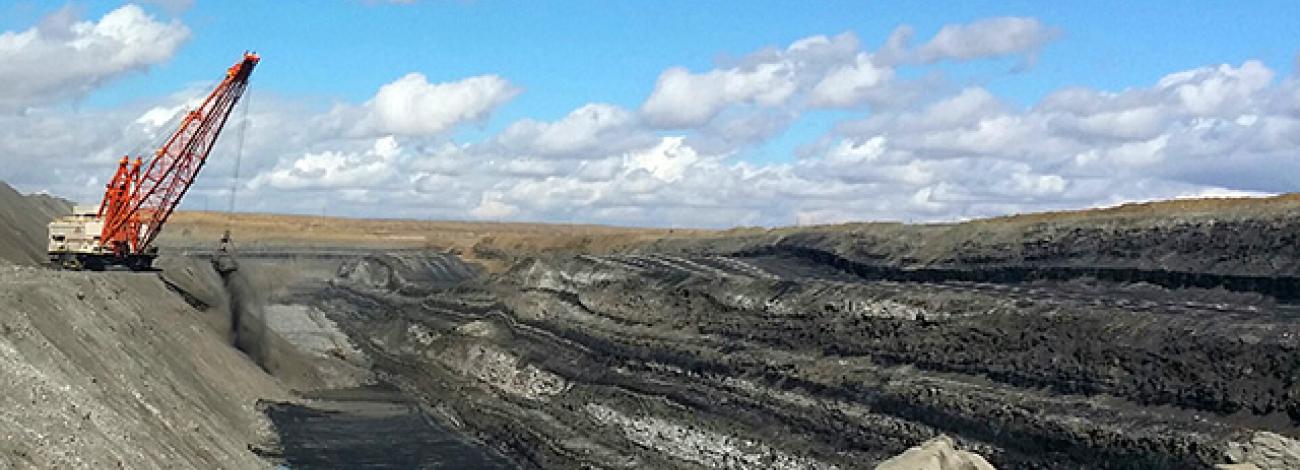
New Mexico Mining and Minerals
Mineral development is an important land use within the BLM multiple use mandate. Federal minerals are classified into three categories: locatable, leasable and saleable minerals. However, the BLM manages minerals overall as either fluid minerals (oil, gas, geothermal resources) or solid minerals (all other minerals).
All locatable, saleable and solid leasable minerals are managed under the solid mineral program, with the solid leasable minerals managed in the coal and non-energy leasable mineral subprograms. The BLM New Mexico State Office has jurisdiction for various aspects of all Federal minerals in New Mexico, Oklahoma, Texas and Kansas, as well as trust responsibilities for managing certain aspects of Indian minerals in these states.
Locatable Minerals
Locatable minerals generally comprise metallic minerals of high unit value such as gold, uranium, silver, molybdenum, copper, lead, zinc and certain industrial minerals such as diamond and gem-quality sapphire, ruby, beryl, etc. Locatable minerals are subject to the General Mining Law of 1872, as amended.
Locatable minerals are generally acquired by locating a mining claim, recording the claim in county in which the claim is located, filing a copy of the recorded claim with the BLM state office of jurisdiction, conducting mineral exploration, and delineating a valuable deposit of a locatable mineral. An annual fee or annual assessment work and an annual waiver is required to maintain the claim
No royalties are paid to the Federal government for removing locatable minerals. However, one must obtain BLM authorization prior to conducting most exploration (including any surface occupancy beyond that allowed for the general public) and prior to conducting all mining operations for BLM-administered locatable minerals. The key regulations are 43 CFR 3710 3838. The link to the right provides some additional information about locatable minerals in the BLM New Mexico State Office jurisdiction.
Leasable Minerals
Leasable minerals generally comprise energy minerals (e.g., oil, natural gas, coal, geothermal resources), fertilizer minerals (potash and potassium minerals), and certain industrial minerals such as halite ("salt") and sulfur. The BLM disposes of solid leasable minerals per leases under the authority of the Mineral Leasing Act of 1920, as amended.
Forty nine percent of the Federal revenue from the leasable mineral program is provided to the states in which the minerals occur. The key regulations are 43 CFR 3100 3590 and 43 CFR 3900 3930.The links at the right provide some additional information about solid leasable minerals in the BLM New Mexico State Office jurisdiction.
Saleable Minerals
Saleable minerals ("mineral materials") generally comprise topsoil, clay, caliche, cinders, pumice, sand, gravel, crushed stone, rip-rap and other minerals commonly used in construction, agriculture and decorative applications. The BLM disposes of saleable minerals by sale contracts and free use permits under the authority of the Materials Act of 1947, as amended.
Note that in most cases when there is private surface estate and Federal mineral estate, saleable minerals are part of the Federal mineral estate and the use of such minerals (e.g., to construct roads and foundations) generally requires a sale contract or free use permit.
Saleable minerals are generally available in abundant quantities covering much of the ground surface and are of low unit value, e.g., BLM sale contracts generally require a royalty of only a few dollars or less per ton or cubic yard for the right to remove the minerals. Five percent of the Federal revenue from the disposal of saleable minerals in the BLM New Mexico jurisdiction is shared with the states in which the minerals occur.
The key regulations are 43 CFR 3600 and 43 CFR 3602. The BLM New Mexico jurisdiction issues about 300 sale contracts each year for a total of between 1.0 million and 3.5 million cubic yards of saleable minerals worth $5 million to $10 million, and issues about 15 free use permits for a total of 0.5 million cubic yards of saleable minerals saving the taxpayers some $0.5 million each year.
